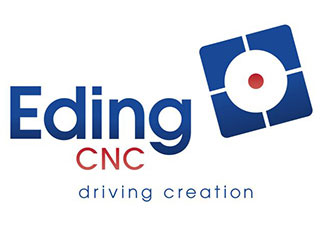CNC760 Controller
In this blog we will tell you more about the CNC760 and why this is an excellent choice for your CNC machine and the extras this controller provides compared to the CNC720.
In our blog about the CNC720, a lot has already been said about the basics of what exactly a control like the CNC760 does. If you would like more background information, we advise you to read it first.
The CNC760 can be seen as the ‘bigger brother’ of the CNC720. They have a lot in common, but they also certainly have differences. The first step is the power supply, in both cases the controller is powered by 24VDC, making it easy to use in an industrial environment. The step frequency of 400kHz per axis is also the same. However, unlike the CNC720, the CNC760 has the option to use 6 axes.
What are these extra axles useful for?
As soon as the machine needs more options, it is useful to have extra axis. On larger machines, two axes are often used on the gantry. In our product we offer the so-called ‘master-slave’ control solution for this. Two axes are used in tandem on the left and right sides. The main reason is often that the gantry is very heavy, and when using 1 motor it is difficult to keep the gantry straight. The result is that the machine no longer works at right angles. By being able to control both motors separately, it is possible to ensure that if the gantry is not perpendicular, it can be adjusted via our control software. The result is a more precise and straighter machine.
This solution is the best, but if you only have 4 axes you cannot expand further. With new axis it is possible to do more with a CNC machine. An example of this is the use of an axis as a rotation axis. This means that this axis does not cause a displacement, but a rotation. This rotation can be of the material being processed, for example if you want to make holes in a tube. But it may also be that you want to turn a head, consider using a tangential knife. This knife must always be in the direction of movement for optimal cutting. Our software supports the use of a tangential knife ‘out of the box’. Once the software is informed that it is in use, it will direct the relevant rotation axis to maintain the correct position. This means that this extra option does not come at the expense of another axis.
Automatic Tool Changer.
Another example where an additional axis can be used is a rotating tool changer, which contains different tools that a machine can select. Of course, the right tools must be able to be picked up by the machine. Since this is a rotating holder, it must be rotated into position. This extra axis makes this easier to achieve.
Apart from extra axis, the CNC760 offers even more advantages compared to the CNC720. It is equipped with much more I/O. This I/O is used for many applications, like eg. other types of tool changers use valves for pickup and dropping the tools.
But more I/O is also required in a large machine to monitor and control various sensors, for example air pressure and doors that are open or not. In short, a lot of things where extra digital inputs and outputs come into play.
Furthermore, a CNC760 control has a wide variety of other outputs for controlling parts of a machine:
| Uitgang | Functie |
| Stepx/Dirx (6x) | Step and direction signals for stepper motors |
| Tool | Switch tool ON/OFF (M3) |
| Flood | Coolant (M7) |
| Mist | Coolant (M8) |
| 10x AUX out | Generic digital output |
| 2x Analog (0-10V) | 0-10V signal (e.g. tool speed control) |
| Sysready | Indication that controller is active |
In addition to outputs, there are of course also various inputs:
| Ingang | Functie |
| Home (6x) | Connection for ‘home’ sensors |
| Probe | Sensor connection for external measurements |
| E-Stop | Emergency stop |
| Drive alarm | Motor driver alarm |
| Ext Error | Externe error |
| Run | Start of job |
| Pause | Pause of job |
| Handwheel A/B | Connection for external handwheel |
| Analoog In (8x) | Analog input 0-3.3V |
| PWM (8x) | PWM output (open collector) |
| Spindle Encoder | Spindle |
To expand the CNC760 even more, it is also equipped with a MODBUS connection. Electronics can be connected to this that communicates by means of the Modbus RTU protocol. This provides additional options and extensibility for CNC equipment.
Finally, EdingCNC’s unique solutions make it easy to choose the best CNC control for a machine. The PC software automatically adapts to the capabilities of the connected control; and it is therefore easy to select a different EdingCNC control. For more information about CNC760 you can always contact us.


